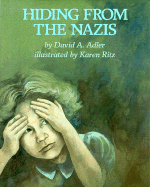What We
Wear: Dressing Up Around the World
Written by: Maya Ajmera
Charlesbridge, 2012
32 pages
Multicultural
Written by: Maya Ajmera
Charlesbridge, 2012
32 pages
Multicultural
Are you
looking for a book to show your students all about how different cultures dress?
Did you know that the way you dress can symbolize how we worship, where we go
to school, or how we represent our heritage? What we wear expresses our
individuality. But the one thing that we
all have in common is that we are all unique and beautiful. Learn about the many different clothing’s
around the world by reading What We
Wear: Dressing Up Around the World.
The
pictures in this story do a great job at capturing the individuality of each
child in their traditional dress. This
story is a celebration in bright, beautiful photographs. What
We Wear: Dressing Up Around the World inspires young children from all
around the world to explore how clothing makes them feel and how it tells about
them. Each student will be encouraged to
want to know more about each other’s heritages after reading this book.
For
this story I would have my students have a dress up day. Each student will be encouraged to go home
and ask their parents or grandparents about their heritage and come to school
dressed in their heritages traditional clothes.
Then I would have my student write a brief description about their
heritage and how it came to be about.
Then I would do a history lesson and allow my students to find their
Native Heritage and tell the rest of the class about it, by showing it on a
map, pictures, and facts.



















